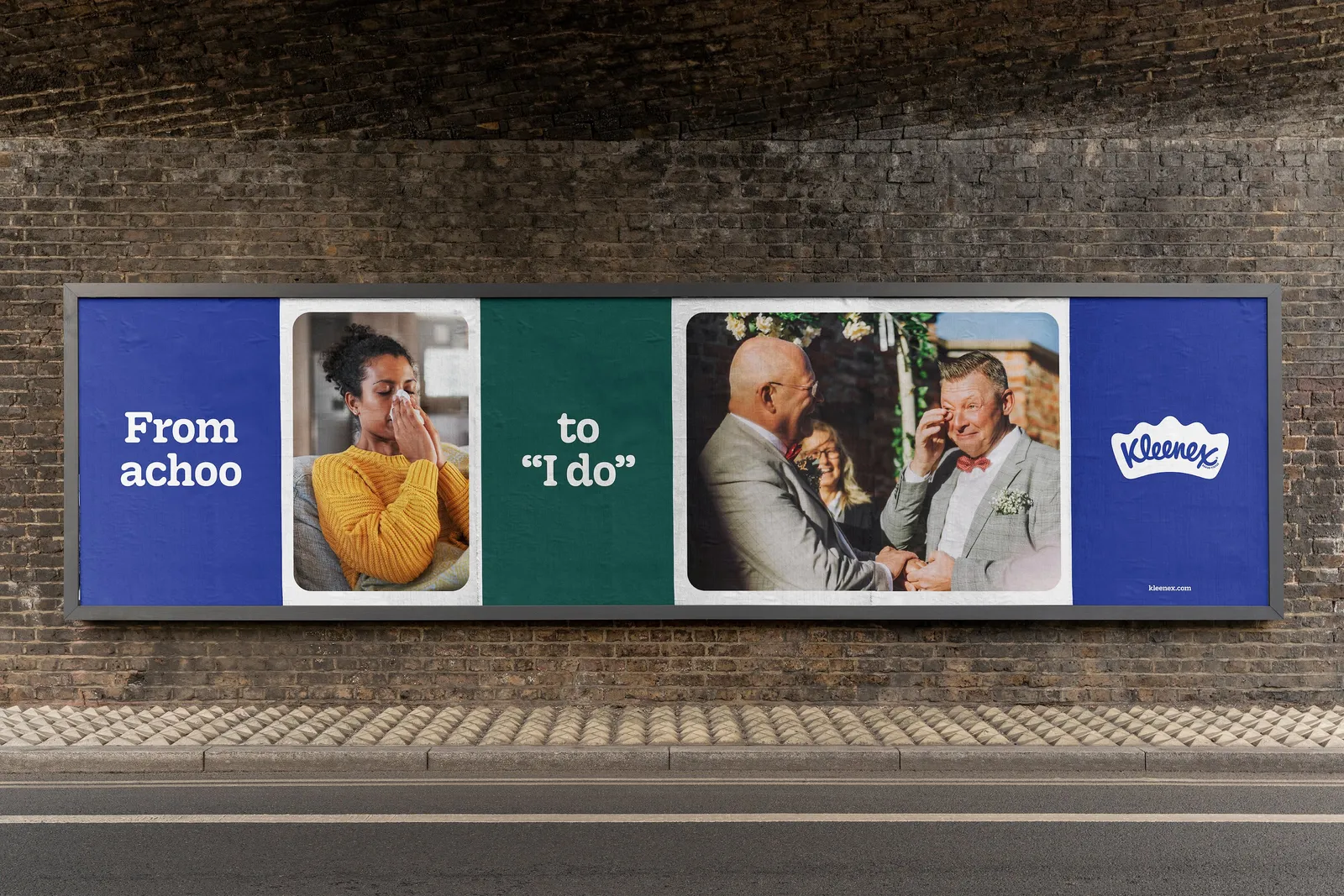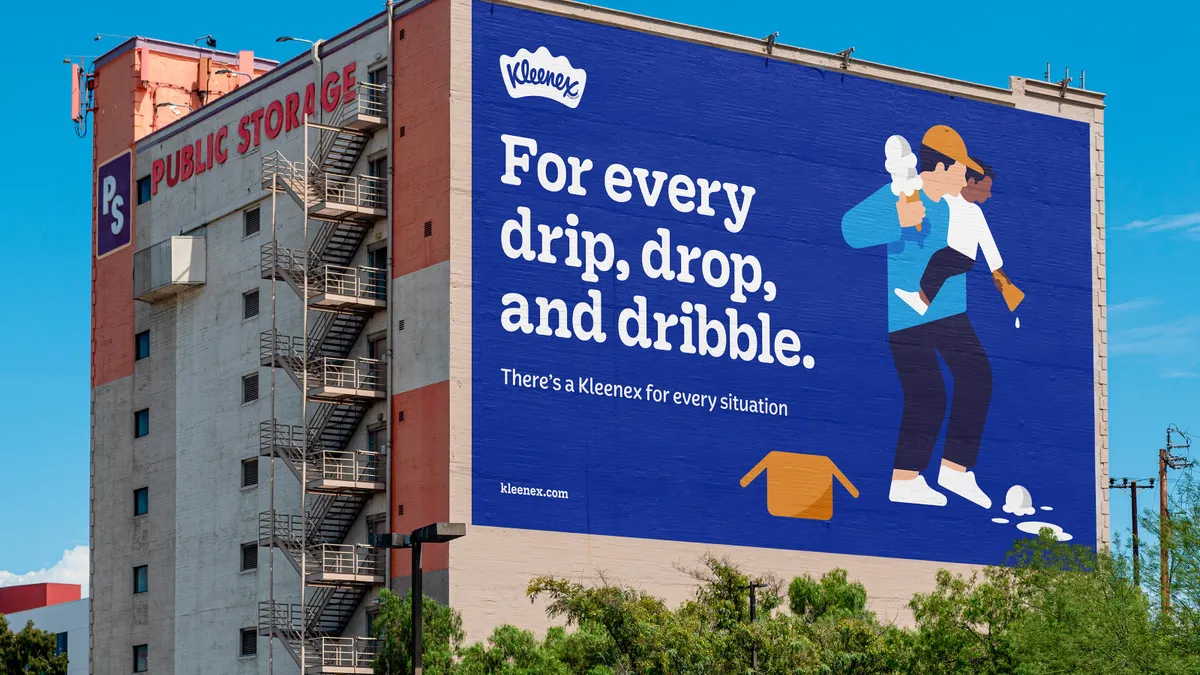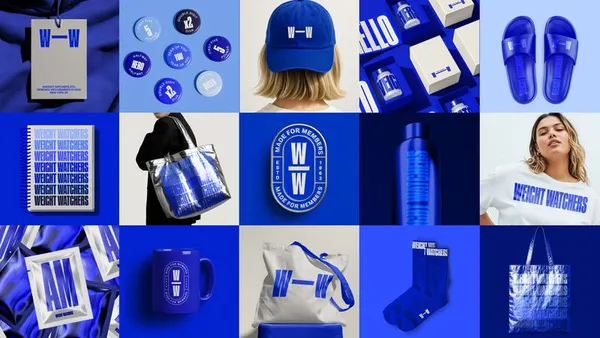Kleenex keeps company among the rare brands — like Band-Aid, Tupperware and Thermos — whose names have become generic. Such ubiquity is a double-edged sword: in these cases, awareness is nearly universal, but the brand is at risk of commodification and competition from other companies, private labels and market entrants. In the case of Kleenex, the brand can be replaced by other paper products and, in a pinch, shirt sleeves.
To ameliorate this issue and others, Kleenex recently launched a new global visual identity, bringing cohesion across markets and establishing a stronger brand personality that serves as a platform for creative storytelling. The effort is joined by a new campaign and comes as the Kimberly-Clark brand commemorates its 100th anniversary.
The marketing push also marks a pivot from a functional message to an emotional one that sees Kleenex focus on a brand promise around “helping people find strength in moments of everyday vulnerability,” said Jennifer Kasmarick, director of creative excellence for Kleenex.
“We wanted to think about how we could update our visual identity to help that story really land with impact,” the executive explained. “One of our main objectives was to infuse more meaning and personality into how we show up and create a really distinctive look and feel for the brand.”
Meaningful change
In its 100-year history, Kleenex has seen its wordmark logo take different forms, including the 1961 rendition created by legendary designer Saul Bass. But in recent years, different versions of the logo were floating around the globe, giving the brand — and Publicis Groupe design agency Turner Duckworth — an opportunity to unify its visual identity.
“While many competitors far and wide claim to make facial tissues, there is only one Kleenex,” said Andy Baron, executive creative director at Turner Duckworth, in a statement. “Every square inch of the new visual identity is designed to reinforce the brand’s category leadership (and invention, for that matter) through a suite of carefully designed distinctive assets, and a system that brings them together.”

The new visual identity is centered on a crown device that houses the wordmark and creates a logo that nods to both Kleenex’s icon status and the image of a tissue being pulled out of a box. The identity also introduces a royal blue anchor color and a bespoke serif font created by type designers Alec Tear and Lewis Macdonald.
The brand and agency worked to infuse meaning into the design elements so they do more than look good: the distinctive assets also needed to help amplify the brand’s storytelling and communication.
“The brand wants to be able to speak in a range of tones across the spectrum of emotions and stories,” Kasmarick said. “There is a strength to [the font], but there's still an approachability to it.”
Tear-jerking creative
Kleenex’s new identity is now live on TV and in short-form media spots that rolled out initially in North America. The brand’s new ad, “The big day,” demonstrates how the new visual identity comes to life in a spot soundtracked by a cover of Bob Marley classic “Three Little Birds.”
Created by FCB Chicago, the ad plays into the high emotions of a child’s first day of school, with a voice-over noting, “You expected tears at drop off. You didn't expect them... to be yours.” (The tears will likely not be limited to the parent in the spot but the parents watching it, as well.)
“We developed three new creative spots that demonstrate Kleenex is there to provide strength in raw, human, and vulnerable moments,” said John Starkey, president of family care at Kimberly-Clark, in emailed comments. “Consistently, we hear the various ways people are using Kleenex, and it’s not only during cold and flu or allergy season. People are grabbing boxes of Kleenex when they laugh, they cry, and so much more.”
Along with TV ads, the visual identity will come to life in out-of-home ads and even brand merchandise, giving Kleenex an opportunity to reassert itself across channels in a unified manner.
“There's a huge opportunity to build that mental memory structure,” Kasmarick said. “As an iconic brand, we want to show up in a consistent and iconic way.”














